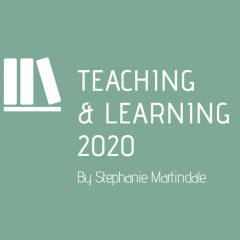‘Interaction with artefacts deepens students’ learning.’ (Schultz 2012, p.185)
I designed my object-based learning session as a synchronous online activity, delivered on the BB Collaborate platform. Due to the mode of delivery, my ‘objects’ were in fact images of the objects, rather than the objects themselves. I’ve discussed my thoughts around the limitations of this in more detail my ‘Critical Review of Object Based Learning’ blog.
My learning objectives and session plan for the session were:
- To stimulate discussion (Communication)
- Encourage exploration of design (Design awareness)
- To inspire critical & creative thought (Inspiration)
- To identify cross-cultural connections

- I started the session in a conversational tone to set the mood and to introduce myself and the session.
- I then went on to explain the learning objectives of the task to inform students of what is expected from this session.

- Following this, I set the activity brief for the session, explaining what the task was about and how to do it in order to engage students. The prompt questions for response were displayed for students to see.

- I then went on to display the two objects on the screen, side by side. There was no description or context given to the objects, so as not to limit students thinking and ideas about the objects from the start, however I tried to choose a culturally diverse selection of objects; object A originated in the UK, while object B originated in the Caribbean.

- Following the end of the activity, I allowed students time to briefly explain their answers which allowed me to hear their thoughts, ideas and perceptions which I found very interesting. The task was then finished.
Feedback
The outcome of the session was the receipt of extremely positive feedback via Padlet and the verbal feedback recorded during the session itself was also very positive, thus confirming the success of the activity.

Successes
Upon personal reflection, I think part of the success of my microteaching session, was understanding the context in which it was being delivered. I was well aware of the time restrictions, with it being an 8-minute task, I knew I had to plan meticulously, by the minute, to ensure that it could be executed in full. This meant that the structure and the activity was designed with the time-frame in mind and I was careful not to over over-optimistic with what could be achieved in such a short timeframe. The three core aspects of the session which I facilitated was: learning objectives, the activity itself and the activity de-brief/discussion, all of which I was able to execute effectively.
The success of the delivery was reaffirmed given the feedback from students including ‘this was a really well planned and paced activity’. Producing session plans is something I will always continue do for all my teaching delivery, as I find structured planning is a key driver in it’s success.
Other positive feedback included:
- Delivered active feedback to students for encouragement
- Clear communication
- Well balanced delivery – facilitated rather than dominated it
- Clear, visual, non-complicated powerpoint
I also believe that the session was successful as I was able to link the activity closely with the LO’s, so the session was well structured and remained relevant throughout. Clarifying the LO’s at the start of the session was beneficial for students to understand the nature of the activity and it’s relevance – this is something I will continue to do as part of the foundations of my teaching practice.
Challenges and areas for improvement
I found the time limits of the activity fairly restricting in terms of the breadth of teaching which could be delivered. For example, had this activity been longer in duration, I would have adapted the activity to include more objects, longer time for group discussion and broadened the scope of prompt questions e.g. to enquire about other aspects of the objects aside from functionality (e.g. material choice)
In hindsight, I would have ended this activity more strongly with a follow-up activity, summary or resource to review to ensure that students remain engaged and the session was more ‘well-rounded’.
As a spectator during the activity during the session, I observed and heard comments and reflections that make me feel satisfied that the LO’s were met at the end of this activity. However, given the time restraints, I was unable to check this in full. One way to check for learning and engagement in my teaching practice in future would be to make use of platforms such as ‘Mentimeter’ with brief tasks such as live polls or Q&A’s. This would allow me to better measure whether the LO’s have been met.
Additional student feedback which I have reflected on is the need for some variety in my object selection. This is something I will consider in future OBL tasks to keep it varied, engaging and relevant to different contexts and cultures. I also considered choosing objects that students may have found in their home-surroundings, although the task would have to be adapted to accommodate for the ‘variations’ of the objects that might be found across different households (e.g. a spoon in one household may be different from another)
Another suggestive piece of feedback was to make more use of ways to make the session more inclusive. Inclusive practice is something that grounds my work as a teaching professional and so I will always continue to explore ways to enhance inclusivity in my sessions. One way to do this for example would have been a broader selection of culturally diverse objects to enrich the learning experience and encourage dynamic and interesting discussions
